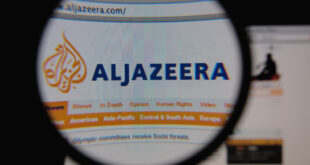Research shows Orban’s allies exert control over more than 50 per cent of influential media outlets. And that does not mean the rest belongs to the opposition; rather these outlets operate as independent islands, which also act independently of each other.
More than half of our media outlets are extremely critical of the government: all objective studies show that the market share of media outlets which are critical of the government is above 50 per cent,” Hungarian Prime Minister Viktor Orban informed readers of the German daily Welt am Sonntag before Christmas.
His statement, however, as unpicked below, is misleading; the outlets that are financially independent and able to withstand political influence neither operate as a uniform block, nor do they have ‘oppositionism’ as their primary mission. Among the outlets branded anti-government by Orban are those that are conservative – such as the crowd-funded Valasz Online – expressly neutral, left-leaning and hard left.
By contrast, almost all the outlets that uncritically echo the messages of Orban’s governing Fidesz party have been shepherded into an openly pro-government media holding, the Central European Press and Media Foundation (CEPMF). Those that operate outside of the holding are as good as incorporated into CEPMF, because they are run by employees of Lorinc Meszaros, Orban’s closest oligarch-ally.
Integrated media control, therefore, is not present among the so-called critical outlets but in the Hungarian prime minister’s press empire, which already consists of more than 50 per cent of all influential outlets.
Uncertain status
According to research conducted by Válasz Online, there are currently 88 media outlets that, depending on the size of their teams, are able to influence public life – either by reaching millions or by publishing regular, exclusive content. Exactly half of these 88 (TV and radio channels, dailies, weeklies, and news portals) are now owned by members of Orban’s closest circle.
Another nine outlets have what we term “uncertain status”. This means that while their owners have recently cooperated with key actors of the Hungarian ‘power vertical’ as well as been recipients of state advertising (unlike real independent media outlets), the tone of these outlets is oppositional – at least for now. In the spring of 2022, Hungarians will go to the polls in a parliamentary election that many believe will represent a referendum on Orban’s rule. The role that these “uncertain status” outlets will play in the campaign has yet to be defined.
When it comes to TV channels and dailies, Orban’s level of control is even more significant – instead of 50 per cent, it is more like two-thirds. Among the national TV channels, only the Bertelsmann-owned RTL Group is independent from the government. RTL’s biggest competitor TV2, cable news channel Hír TV and the new political tabloid channel Pesti TV are openly pro-government.
The channel ATV is often labelled as anti-government, though its owner – Sandor Nemeth, pastor of the biggest Hungarian neo-Protestant church and supporter of various political groups since the collapse of communism – has enthusiastically embraced his more conservative side over the last few years. It is entirely up to Nemeth whom ATV will favour during the 2022 election campaign.
As for daily newspapers, Hungary has only one publication left that is financially independent from the government: the tabloid Blikk, owned by the Zurich-based media company Ringier Axel Springer. The rest are, to varying degrees, attached to Orban. The crown jewel is the collection of regional dailies owned by the aforementioned CEPMF, as they reach the biggest audience through their monopoly in each county – which is why Valasz Online counted it as one unit among the 88 influential outlets.
Over the past few years, the sole left-leaning national daily, the social democratic Nepszava, has had a series of owners who have all enjoyed significant financing from the current government, notwithstanding the base of their fortunes being built during the pre-Orban era. Moreover, state advertising forms a significant share of Nepszava’s revenues, which other independent – or, as Orban put it, government-critical – outlets can only dream of.
It remains an open question as to why Orban supports Nepszava and ATV: does he intend to prove to the EU and other foreign institutions that Hungary enjoys a plurality of media and opinions? Or is there a plan for these outlets to have some special role during the 2022 campaign? Only time will tell.
When it comes to TV channels and dailies, Orban’s level of control is even more significant – instead of 50 per cent, it is more like two-thirds.
Showing personal independence
A frequent argument deployed by pro-Orban pundits about Fidesz’s overwhelming media dominance is that anti-government outlets enjoy a far wider reach online, meaning their influence is more significant than pro-government counterparts. However, the two oldest and biggest “news factories”, online news portals Index and Origo, are now also controlled by Orban’s circle. Furthermore, the size of the audience of the pro-Orban outlets remains a mystery, as many do not publish the relevant data.
What is beyond doubt, however, is that the moneymen around Viktor Orban and Fidesz are now able to centrally control half of Hungary’s influential media outlets. That means it is up to individual journalists working within the state ‘collective media farm’ whether the majority of Hungarian society will be informed through the uncritical lens of the government.
While Hungary could easily witness the supremacy of propaganda, much will depend on the Hungarian people and their willingness to crowdfund the independent media sphere. Based on Valasz Online’s experience, Hungarian society is aware of its responsibility and is willing to fund independent content producers. Press freedom, in this regard, still exists in Hungary, but only with society’s support can it remain alive.
 Eurasia Press & News
Eurasia Press & News

